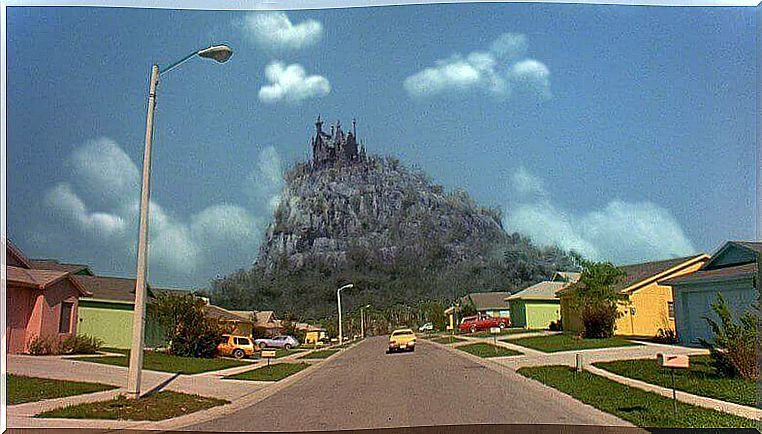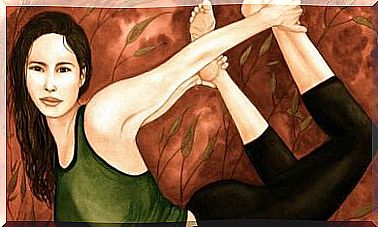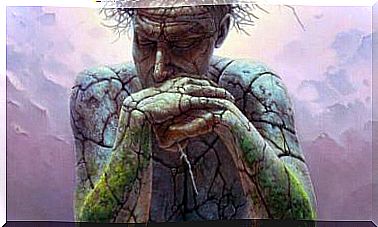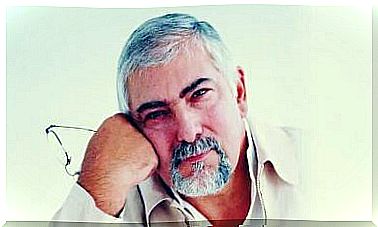Edward Scissorhands, A Story About Acceptance

‘Edward Hands of Scissors’ , directed by Tim Burton in 1990 and starring young Johnny Deep and Winona Ryder, is, for many, this author’s masterpiece. Its soundtrack, composed by Danny Elfman, which became a musical reference, stands out.
The aesthetics of the film from the film ‘Edward Hands of Scissors’ draws attention from the credits, with objects that resemble other works by the same author. At the beginning of the film, the image of an old mansion full of dust and, at the same time, magical, already anticipates that we are facing the purest “Universe Burton”.
In the form of a short story, almost a fable, mixing fantasy with everyday life, Burton presents a film full of emotions and feelings. It gives life to a story where two messages stand out: the importance of accepting differences and putting prejudices aside.
‘Edward Scissorhands’ is a very personal account, in an autobiographical tone, despite being presented as a fantasy. Burton himself has spoken on several occasions of some problems during his childhood; in fact, he always defined himself as lonely and even “weird”. Even his ex-wife, Helena Bonham Carter, recognized in him some characteristics of Asperger’s syndrome.
Edward Scissorhands, a story full of contrasts
Burton presents the film as a lady’s tale to her granddaughter, and from there, we enter the fantasy. It all starts in a colorful neighborhood full of gardens and single-family homes. There is not a car, a door, a piece of clothing in the neighborhood that is black. Among all this coloring, an old mansion stands out in the background and on top of the hill, practically in ruins; gray and black, with an aspect reminiscent of German expressionist cinema.
The first character we meet is Peg, a mother of two who works for the Avon cosmetics company. In a desperate attempt to sell her wares, Peg decides to enter the mysterious mansion. Upon arrival, she finds strange trees that have been pruned to imitate animal and human shapes.
The mansion, which seemed dark from afar, has a beautiful and colorful garden that is totally unexpected, which serves as an advertisement for the extraordinary inner world of its inhabitant. Music plays a key role as Peg enters the mansion.
Surely Peg had expected to find something terrifying, dreadful; however, she finds a magical and wonderful environment, with sculptures charged with sensibility. The mansion is completely abandoned inside, full of dust and cobwebs; highlighting some newspaper clippings pasted on a wall where we can read headlines such as “Boy born without eyes reads with his hands”. A little later, we meet Edward, the strange inhabitant, who has an unusual peculiarity: he has scissors for hands.

The encounter with the world and social relations
From the start, Edward shows admirable innocence. He does this when referring to his father saying that “he didn’t wake up”, in a clear allusion to his ignorance of the world, life and death. Peg, fascinated by the scars caused by the scissors, decides to test her cosmetic products on him and invites him to her house.
From that moment on, we will witness all of Edward’s problems to live in society, distinguishing good from evil, the deep rejection he initially generates among neighbors, and his subsequent fascination when they discover they can take advantage of his abilities. as a gardener and hairdresser. The neighbors represent malice in its pure state, point to collective thinking and are the faithful reflection of how this idea changes depending on circumstances, so that their opinion of Edward is not their own, but collective.
Burton shows how difficult it is to be accepted when you are not like everyone else. It awakens curiosity in some and fear in others. We see how the neighbors are talking about everything that happens in the neighborhood, spreading rumors, criticizing Peg and her strange tenant.
Edward fits in very well in Peg’s family, establishing a great relationship with her youngest son and her husband. However, when he meets Kim, the teenage daughter, she awakens certain feelings in Edward that he is unable to express. The relationship with Kim is difficult at first due to her prejudices, but over time, she will see in Edward the person he really is and the big heart he has.
Edward begins to arouse admiration among the neighbors for his skills as a hairdresser and gardener, his popularity increases and they even offer to set up a beauty salon for Edward. Edward and Peg go as guests to a television show, where they explain Edward’s case and the audience comments and asks questions. It is curious how, at this moment, we see that what is different becomes an attraction, generates a certain fascination. Edward is no longer different, he is special.
What is “different” frightens
Trouble returns when Edward agrees to help Kim and her boyfriend commit a felony; from there, we return to the degradation of the character, of what is different. Society begins to see him as a monster, as someone who must be eliminated because he is dangerous. The neighbors, who so admired his talent, are now afraid of him, make up stories and want to see him dead.
There’s a scene where Edward is being chased around the neighborhood, he’s alone, everyone wants to kill him, etc. A dog sits beside him, he cuts his bangs so he can see better, and the animal thanks him. This little instant is really magical; here, Burton shows how prejudices are unknown to animals, and at times they can be much more forgiving than many people.
Burton shows a character without malice, with social problems because he lived isolated for a long time due to his particular condition. Few people see Edward as a good and innocent man. The mansion is a reflection of this personality, with a large, imposing and dark fence, which serves as a breastplate to protect this sensitive magical garden.
Many things have been said about Burton and Asperger’s syndrome, and it’s hard to know for sure what the director’s childhood and life was like. However, we can appreciate certain traits of this syndrome in Edward’s character, such as his inability with his hands, his problems to adapt and his deep inner world. Undoubtedly, ‘Edward Scissorhands’ offers us a wonderful lesson in acceptance, teaches us not to be afraid of feelings and to know better the inside of people.









